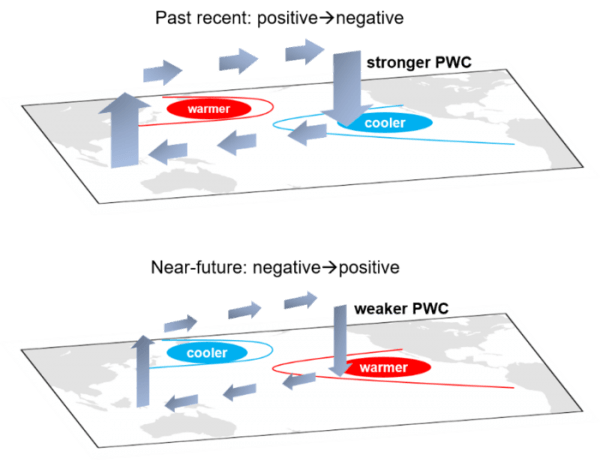A new study demonstrates that the naturally occurring warm-to-cold change in the tropical Pacific Ocean is the major cause for the recent intensification in Pacific Walker circulation, the most prominent feature of the tropical Pacific.
The Pacific Walker circulation, a large east–west atmospheric circulation along the equatorial Pacific, is observed strengthening during recent decades (1980–2015). The strength of Walker circulation can regulate the heat budget of the global climate system via air-sea interactions and has extensive impacts on water cycle over regions like the South Asia, the Maritime Continent and the Amazon basin. Identifying the driving mechanisms and hence predicting the future changes of the Walker circulation are essential for monitoring the hydrological cycle regionally and globally.
However, there is an ongoing debate on the physical driving mechanisms of the observed strengthening trend of the Walker circulation. A range of factors may have contributed to the observed changes of the Walker circulation, including external forcing and natural variability. The quantitative influence of these factors is still uncertain and which part of global ocean acts as a dominator remains inconclusive. Moreover, the potential change of the Walker circulation in the near-term future remains unknown.
Now a study by researchers at the Institute of Atmospheric Physics, Chinese Academy of Sciences, China, shows evidence that natural decadal variability related to the Pacific Ocean has played a more significant role in modulating the Pacific Walker circulation change and the Walker circulation is projected to weaken in the coming decades.
Read more at Institute of Atmospheric Physics, Chinese Academy of Sciences
Image: Schematic illustrates the impact of Interdecadal Pacific Oscillation (IPO) phase transition on the strength of Pacific Walker circulation (PWC) in past recent and near-future. (Credit: MIngna Wu)


